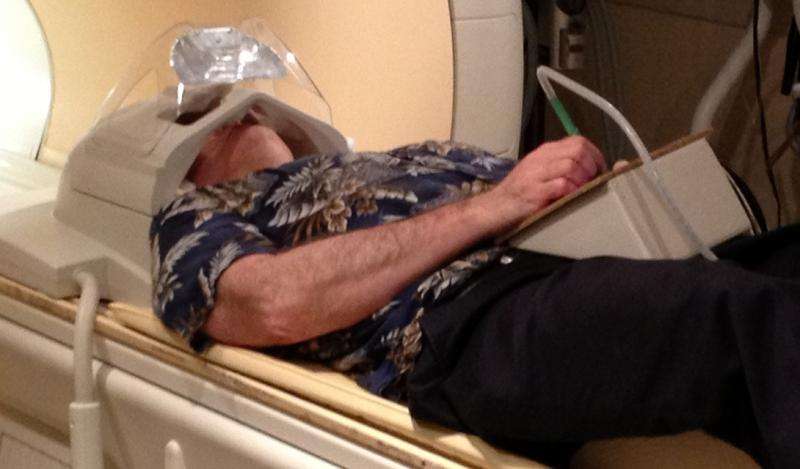Research shows brain differences in children with dyslexia and dysgraphia

University of Washington research shows that using a single category of learning disability to qualify students with written language challenges for special education services is not scientifically supported. Some students only have writing disabilities, but some have both reading and writing disabilities.
The study, published online in NeuroImage: Clinical, is among the first to identify structural white matter and functional gray matter differences in the brain between children with dyslexia and dysgraphia, and between those children and typical language learners.
The researchers say the findings underscore the need to provide instruction tailored to each of these specific learning disabilities, though that is currently not mandated under federal or state law.
"This shows that there's a brain basis for these different disabilities," said co-author Virginia Berninger, a psychologist who heads the UW Learning Disabilities Center, funded by the National Institute of Child Health and Human Development.
"So they require different diagnoses, and different instruction. We've got to start acknowledging this."
The study involved 40 children in grades 4 to 9, including 17 diagnosed with dyslexia—persisting difficulty with word reading and spelling—and 14 diagnosed with dysgraphia, persisting difficulty with handwriting, along with nine typical language learners. The children were asked to write the next letter in the alphabet following a letter they were shown, to write the missing letter in a word spelling, to rest without any task, and to plan a text about astronauts.
The children used a fiber-optic pen developed at the UW that allowed researchers to record their writing in real time while their active brain connections were measured with functional magnetic resonance imaging, or fMRI.
The three groups differed from each other in written language and cognitive tasks. The control group had more white matter connections, which facilitate functional connections in gray matter for language processing and cognitive thinking.
By contrast, children with dyslexia and dysgraphia showed less white matter connections and more functional connections to gray matter locations—in other words, their brains had to work harder to accomplish the same tasks.
"Their brains were less efficient for language processing," said lead author Todd Richards, a UW professor of radiology.
The results, Berninger said, show that the two specific learning disabilities are not the same because the white matter connections and patterns and number of gray matter functional connections were not the same in the children with dyslexia and dysgraphia—on either the writing or cognitive thinking tasks.
Federal law guarantees a free and appropriate public education to children with learning disabilities, but does not require that specific types of learning disabilities are diagnosed, or that schools provide evidence-based instruction for dyslexia or dysgraphia. Consequently, the two conditions are lumped together under a general category for learning disabilities, Berninger said, and many schools do not recognize them or offer specialized instruction for either one.
"There's just this umbrella category of learning disability," said Berninger. "That's like saying if you're sick you qualify to see a doctor, but without specifying what kind of illness you have, can the doctor prescribe appropriate treatment?"
"Many children struggle in school because their specific learning disabilities are not identified and they are not provided appropriate instruction," Berninger said. Recent UW research published in February in Computers & Education shows that computerized instruction has tremendous potential to help time-strapped teachers in regular classrooms provide such instruction for children with dyslexia and dysgraphia, but only if they are correctly diagnosed.
"Dyslexia and dysgraphia are not the only kinds of learning disabilities. One in five students in the United States may have some kind of a specific learning disability," Berninger said. "We just can't afford to put 20 percent of children in special education classes. There just aren't the dollars."
More information: NeuroImage: Clinical, www.sciencedirect.com/science/ … ii/S2213158215000613

















